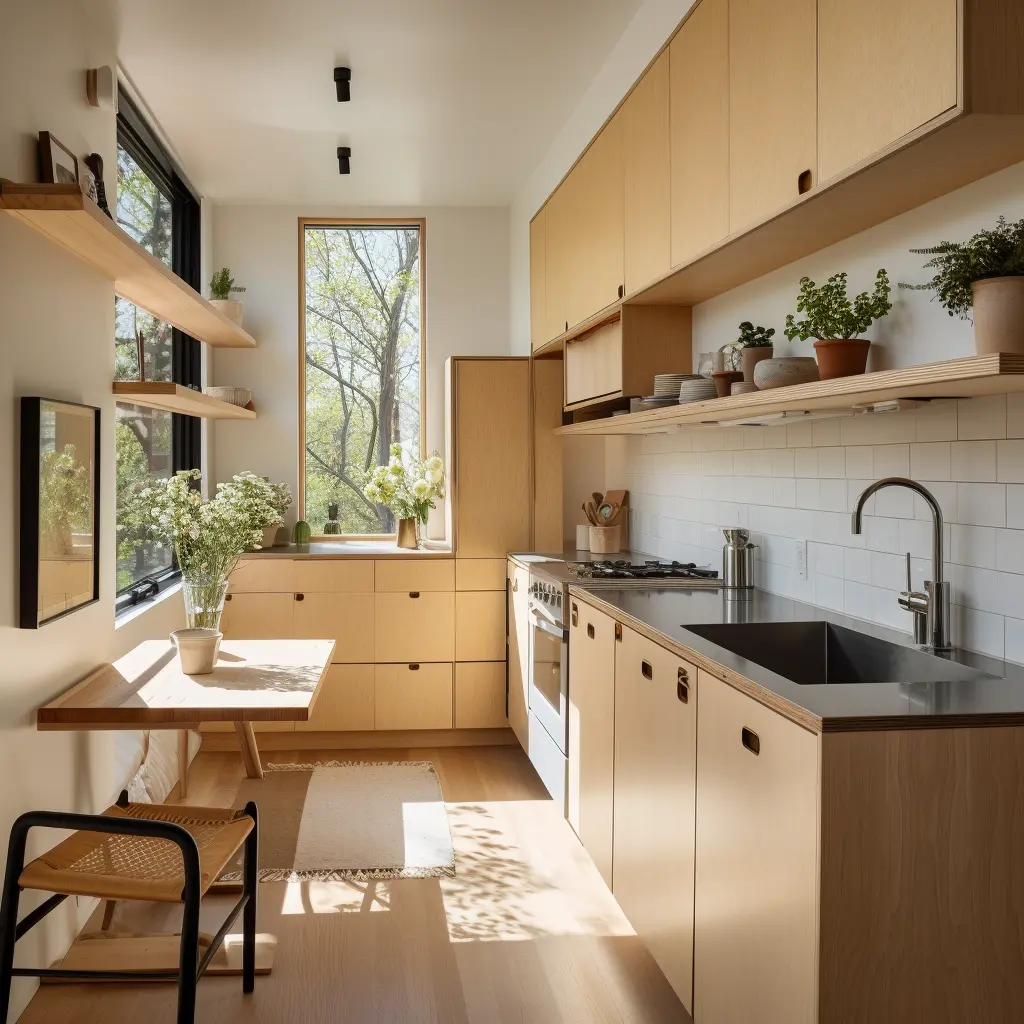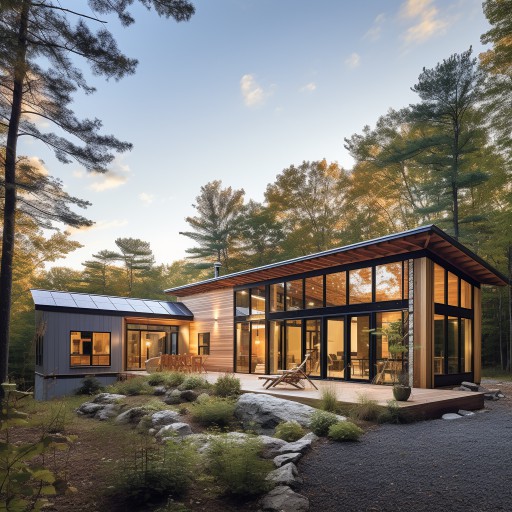How to Renovate Your Home in an Eco-Friendly Way

co-founder
- Plan ahead and set goals
- Choose sustainable materials
- Improve insulation and seal air leaks
- Upgrade to energy-efficient appliances and fixtures
- Install renewable energy systems
- Use smart technology
- Opt for green landscaping
At EcoHome, we understand that renovating your home is an exciting opportunity to create a more comfortable and beautiful living space, while also improving its energy efficiency and environmental impact. By making thoughtful choices and using sustainable materials and practices, you can transform your home into an eco-friendly haven. Renovating your home can also be really complicated and confusing, and doing so in a sustainable, eco-friendly manner can sometimes feel like information overload.
We built EcoHome to help you get started with your renovation or home build without feeling overwhelmed or ripped off. This article is an overview of the process you can follow to renovate your home in an environmentally responsible way, using ecohome.co's resources to help you make the best choices.

Plan ahead and set goals
Before starting your eco-friendly home renovation, take the time to evaluate your current living space and identify your goals. Are you aiming to improve energy efficiency, reduce water consumption, or create a healthier indoor environment? All of the above? Establishing clear objectives will help you make informed decisions throughout the renovation process and hire a good contractor who shares your goals. Use our home renovation project planner page to get a comprehensive understanding of your home's current state and potential improvements.
Choose sustainable materials
Opt for sustainable and eco-friendly materials whenever possible. Some options include reclaimed or recycled wood, bamboo, cork, and recycled metal. These materials have a lower environmental impact and can contribute to a healthier indoor air quality. Additionally, consider using low or no-VOC (volatile organic compound) paints and finishes to minimize harmful emissions. Use Pinterest, Google, Instagram and other sources for inspiration and ideas on sustainable materials and design styles. You can also use our interiors and exteriors pages to refine and organize your ideas.
Improve insulation and seal air leaks
Whatever you decide to do with your renovation, there's no excuse to not tackle insulation as part of the project. Not only will it assuredly save you money if your home isn't well insulation, but proper insulation and air sealing are crucial to maintaining a comfortable and energy-efficient home. Invest in high-quality insulation materials and ensure that your walls, attic, and basement are well insulated. Additionally, seal any gaps and cracks around doors, windows, and other openings to minimize drafts and heat loss.
Upgrade to energy-efficient appliances and fixtures
 You don't have to do it all at once, but when appliances are nearing their end of life or you're renovating your kitchen, replace outdated appliances and fixtures with energy-efficient models to reduce your home's energy consumption. Look for Energy Star-rated appliances, LED lighting, and low-flow water fixtures. These upgrades not only save energy but also reduce your utility bills in the long run. Our budget tools can help you manage the costs of these upgrades and track your savings. If you're remodeling your bathroom, make sure to look for low-flow and other eco-friendly options.
You don't have to do it all at once, but when appliances are nearing their end of life or you're renovating your kitchen, replace outdated appliances and fixtures with energy-efficient models to reduce your home's energy consumption. Look for Energy Star-rated appliances, LED lighting, and low-flow water fixtures. These upgrades not only save energy but also reduce your utility bills in the long run. Our budget tools can help you manage the costs of these upgrades and track your savings. If you're remodeling your bathroom, make sure to look for low-flow and other eco-friendly options.
Install renewable energy systems
Consider incorporating renewable energy systems, such as solar panels or a solar water heater, into your renovation plans. These eco-friendly additions can help to reduce your reliance on fossil fuels, lower your energy bills, and contribute to a cleaner environment.
Use smart technology
Smart home technology can help you monitor and manage your home's energy consumption more effectively. Install a programmable or smart thermostat to optimize your heating and cooling system, and consider using energy-monitoring devices to track your home's energy usage.
Opt for green landscaping
 Incorporate eco-friendly landscaping practices into your renovation plans. Use native plants that require less water and maintenance, install a rainwater harvesting system, and consider creating permeable surfaces to minimize stormwater runoff.
Incorporate eco-friendly landscaping practices into your renovation plans. Use native plants that require less water and maintenance, install a rainwater harvesting system, and consider creating permeable surfaces to minimize stormwater runoff.
By following these steps and utilizing ecohome.co's resources, you can successfully renovate your home in an eco-friendly way that benefits both the environment and your wallet. Remember, making sustainable choices during your renovation process not only helps to reduce your home's environmental impact but also adds long-term value to your property. Start planning your green home renovation today and enjoy the benefits of living in a healthier, more sustainable space with the support of ecohome.co.

Renovate with EcoHome
EcoHome empowers homeowners to confidently build healthy and comfortable homes for a fair price.
Sign UpLocations View All →
NY
- Albany
- Binghamton
- Buffalo
- Esopus
- Freeport
- Hempstead
- Highland
- Kingston
- Long Beach
- Marlboro
- Mount Vernon
- New Paltz
- New Rochelle
- New York City
- Niagara Falls
- North Tonawanda
- Olivebridge
- Plattekill
- Rochester
- Rome
- Saugerties
- Schenectady
- Shandaken
- Syracuse
- Troy
- Utica
- Valley Stream
- Wallkill
- Woodstock
- Yonkers
NJ
- Bayonne
- Brick
- Camden
- Cherry Hill
- Clifton
- East Orange
- Edison
- Elizabeth
- Jersey City
- Lakewood
- Middletown
- Newark
- Old Bridge
- Passaic
- Paterson
- Toms River
- Trenton
- Union City
- Woodbridge
CT
PA
- Allentown
- Altoona
- Bethel Park
- Bethlehem
- Chester
- Easton
- Harrisburg
- Hazleton
- Lancaster
- Lebanon
- Monroeville
- Philadelphia
- Pittsburgh
- Reading
- Scranton
- Wayne
- Wilkes Barre
MD
- Abingdon
- Baltimore
- Bethesda
- Bowie
- Columbia
- Dundalk
- Ellicott City
- Frederick
- Gaithersburg
- Germantown
- Glen Burnie
- Potomac
- Rockville
- Severn
- Silver Spring
- Towson
- Waldorf



